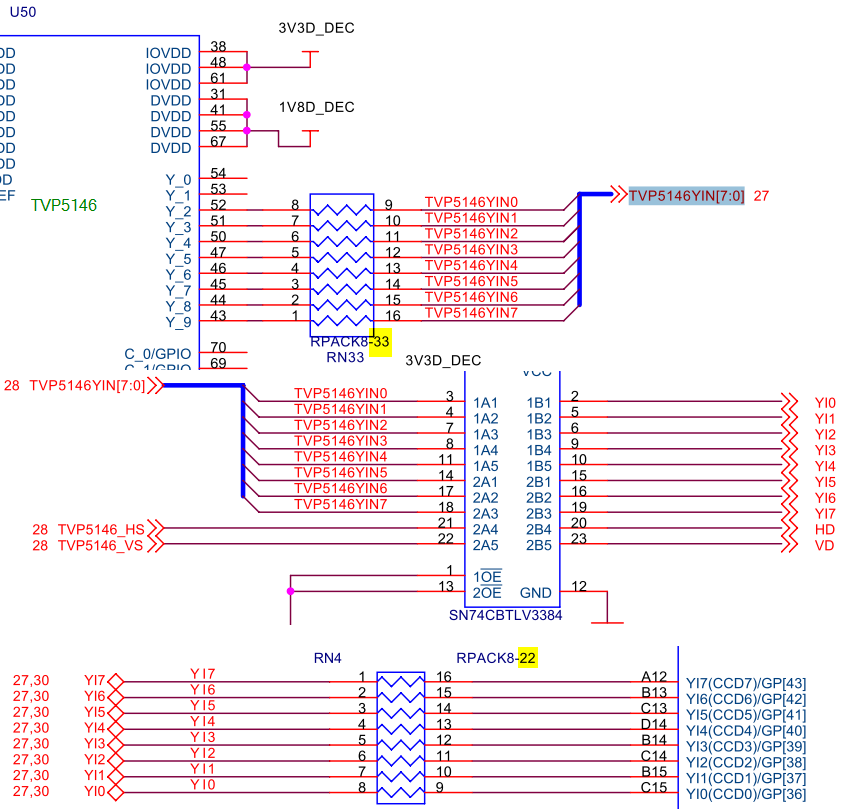Hi All,
I would like to ask a question on TVP5150 termination resistor.

In EVM6437 design which I am referencing, TVP5146 YOUT pins have 33 Ohm termination resistors near them, and at DM6437’s receiving end, YI[0..7] pins also have 22Ohm termination resistors near them. So on each path there is a total of 55 Ohm termination resistor.
Is this too large?
And I am replacing 5146 with 5150 and considering the appropriate termination resistor value. The tracks are of 5mil width, 1.4mil thickness. So how large termination resistor should I choose? Could anyone give a recommendation on this?
And may I place just one group of termination resistors near 5150, or need to place two groups, like in EVM6437 design?
Thanks,
Zheng

